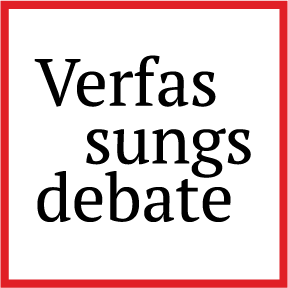Uniform Interpretation and Primacy of Union Law in the Dialogue of the Courts
The issue of uniform interpretation and primacy of Union law raises a fundamental question concerning the allocation and distribution of judicial power in the European Union. From the point of view of Union law practice, however, the discussion, which is now beginning with renewed vigor, seems strangely out of touch with the times. Without offering any solutions or “last words” in this debate, some remarks on the current EU treaty law and its interpretation are in order.
I.
The recent case law of various constitutional and supreme courts (Anótato Dikastírio Kýprou, Ústavní soud České republiky, Højesteret, Bundesverfassungsgericht, Tribunal Constitucional de Portugal, Conseil d’État, Curtea Constituțională a României, Trybunał Konstytucyjny) of Member States of the European Union indicates with great clarity that the issue of uniform interpretation and primacy of Union law raises a fundamental question of the allocation and distribution of judicial power within the EU. Moreover, it is inextricably linked to the general question of the autonomy of the Union’s legal order and the system of legal protection it guarantees. This proves that in fine, this is about the big picture, specifically the power to decide on the nature and finality of integration instituted by the treaties.
From the perspective of Union law practice, the current discussion on the primacy of Union law, which has started anew with such vigor almost 60 years after the Court of Justice issued its fundamental rulings on the issue, may seem strangely out of touch, even anachronistic: During the time before the Treaty establishing a Constitution for Europe, the primacy of Union law determined the legal and contractual practice of the Union institutions and the Member States in relative silence, so that this contractual practice was regarded as implicit acceptance of primacy (Ziller, p. 11 f.). Moreover, beyond all legal nuances, it is beyond doubt that European integration would have taken a completely different course without the fundamental decisions of the 1960s (cf. classically: Lecourt, Quel eut été le droit des Communautés sans les arrêts de 1963 et 1964?, in: L’Europe et le droit, Mélanges en hommage à Jean Boulouis, 1991, 349; see also: Claes, p. 103). Particularly from the perspective of Member State law, the question of hierarchy is rich in symbolism, whereas from the perspective of Union law, it is primarily a matter of the supranational nature of the European Union (recently: RS, para. 47), of the direct applicability of its legal order (recently: Euro Box Promotion, para. 247), and finally of ensuring the uniform interpretation of Union law (recently: Euro Box Promotion, paras. 246, 249, 251; RS, paras. 49, 51, 55).
In this blogpost, I cannot present a solution or innovative insights, especially since these questions are of such a nature that, to my mind, they do not allow for any ” last words” at all. Therefore, I do not pretend to be able to deal with all aspects of this topics and problems worth considering in my following remarks.
A variety of political phenomena today are the basis for the debate on primacy that has now flared up again. For example, some disintegration efforts, which have also become evident elsewhere in the wake of Brexit, are worth mentioning. More profound, perhaps, are the difficulties triggered by the political, economic, social, and rule of law imbalances that have increasingly led to significant dysfunction within the Union following the 2004, 2007, and 2013 accessions. It is reasonable and understandable that in such an environment, questions concerning the finality of the Union and the legal-political appropriateness of its constitutional principles are also raised anew. But perhaps, at least in Germany, there is also simply the desire to catch up on a constitutional and political discussion that was not held at the relevant time in the 1960s, or at least not with the same passion and potential for conflict.
I will not pursue these legitimate questions and problems in the following. As a judge of the Court of Justice, I would like to limit my contributions to this discussion to comments on the applicable EU treaty law and its interpretation. Only in conclusion I would like to let these considerations lead into a perspective outlook.
II.
I would like to formulate seven theses on the uniform interpretation and primacy of Union law in the judicial dialogue.
Thesis 1: The question of the primacy of Union law over the law of its Member States moves in a difficult mélange of legal topoi, which may sometimes be marked by a symbolic understanding of what constitutes the federal limbo in which the European Union finds itself and which determines the conditions according to which it functions. From the perspective of the treaties, however, this question appears in essence to be a logical consequence of the basic requirement of uniform application of the treaties for and in the member states.
The question of uniform interpretation and primacy of Union law concerns the central issue of who has jurisdiction for the final binding decision on the nature and scope of the domestic application of Union law. For courts of the Member States as well as for persons seeking legal protection, the decisive factor is regularly whether a legal norm of the law of the Member States or a provision of Union law is to be used in concreto to decide a legal dispute. The primacy rule does not pursue a norm-hierarchical end in itself, but has been instrumental because it determines the scope of Union law to be observed by Member State institutions and in particular by the judiciary, either for the purpose of a conform interpretation of national law or for the application of provisions of Union law with direct effect.
Thesis 2: Member State courts are required in their daily judicial practice to decide on the nature and scope of the domestic application of Union law on the basis of its interpretation as determined by the Court of Justice. The requirements of uniform application and primacy of Union law are therefore inextricably linked. The exclusive competence of the Court of Justice, laid down in Article 344 TFEU, to issue the ultimately binding interpretation of Union law, specifically in the context of the preliminary ruling procedure in dialogue with the courts of the Member States, constitutes the leitmotif for this from a legal and historical perspective, both with regard to the requirements of uniformity of an interpretation of Union law and to open up the plurality of ways to comply with Union law (as in Centraal Israëlitisch Consistorie van België or in WABE).
Crucially, the legal protection procedures of the Union Treaty, conceived as a complete system, would be deprived of their binding force without the primacy of the interpretation of Union law found in these procedures. Above all, however, the Union would be deprived of the legal power to ensure the uniform application of Union law in the Member States and, in case of doubt, to enforce it. In this context, particular reference should be made to the Commission’s powers under Article 260 TFEU, which have been strengthened again by the Lisbon Treaty. Its ratio legis consists precisely of being able to enforce uniform application of Union law in the Member States.
Thesis 3: From a constructive point of view, first, the question of whether the Treaties and Union law claim precedence over Member State law can only be answered on the basis of the interpretation of Union law. Second, the question of whether the (constitutional) law of the Member States grants the corresponding primacy to Union law and, if necessary, attaches conditions to it, depends exclusively on the interpretation of the respective national law. Third, however, the broader question of whether the conditions that a Member State’s (constitutional) law may impose on the recognition or granting of primacy of Union law are compatible with the European treaties is again a question of interpretation of those very treaties (cf. already Simmenthal II, as well as Melki and Abdeli).
This dialectic shows the great importance of the dialogue between the courts within the framework of the preliminary ruling procedure – not least in order to find out whether a constitutional principle (possibly even one that forms part of a member states identity) is or should be protected in the same way at the Union level and thus not only influences but determines the interpretation of Union law (cf. the decisions in the “Omega” case, on the Kurdish TV station “Roj TV“, on the Russian TV channel “NTV Mir Lithuania” and most recently in the so-called “Latvian university case“). However, this is not a question of a more detailed definition or limitation of the primacy rule, but rather a question of interpretation of substantive Union law, which is to be carried out by the Court of Justice within the framework of the legal protection procedures provided for in the Treaty and is equally binding in all Member States. Notwithstanding, it is a matter of judicial prudence for the Court of Justice to make this interpretation while considering the opinions of the parties to the proceedings and, above all, the points of view that led the referring court to raise its questions of interpretation and, if necessary, to cast doubt on the correctness of an interpretation that has already been made.
Thesis 4: In view of the equality of the Member States before the Treaties guaranteed by Article 4 (2), first sentence, TEU and the prohibition of discrimination on grounds of nationality under Article 18 (1) TFEU, it would be problematic to exempt Member States from the binding interpretation of Union law by the case law of the Court of Justice on the basis of the unilateral invocation of their constitutional concepts by virtue of Union law. In this way, certain Member States would be allowed to deprive certain Union citizens of the rights they derive from Union law. Moreover, such Member States would be privileged compared to those which are prevented from formulating judicial reservations against the domestic effect of Union law for constitutional reasons.
The notion of a constitutionally “mediatized” primacy, which acts as a regulator for the degree of “acceptable” opening of the national legal order by the Member States, already fails because of the heterogeneity of the constitutional reservations that Member State courts apply: For some, the Court of Justice ensures “too little” protection of fundamental rights in its interpretation of Union law (classically, e.g., the Federal Constitutional Court in “Solange I” and the Corte Costituzionale in Frontini, Granital or in the so-called “Taricco II” case), for others “too much” fundamental rights protection is guaranteed (see Conseil d’État in “French Data Network“), and for others still, an interpretation of Union law competence does not correspond to the perspective and understanding from which a particular Member State understood to have accepted (see Trybunał Konstytucyjny). This problem is exacerbated by the fact that the level of fundamental rights protection to be granted under Union law often derives from express provisions of primary law (cf. Article 52(2) CFR) or secondary law.
Thesis 5: The obligation of the Union to respect the national identities of Member States, which is contained in the first sentence of Article 4 (2) TEU, grants Member States a broad scope of action with regard to areas of regulation in which the national identity is reflected, but is not capable of exempting the Member States from observing their obligations under primary and secondary law (cf. Torresi, para. 54 et seq.; Poland v. Parliament and Council, para. 265 et seq.; RS, para. 68 et seq.) and therefore does not entitle them to impose excessive restrictions on fundamental freedoms (Sayn-Wittgenstein, para. 92 et seq.; Las, para. 27 et seq.; Coman, para. 42 et seq.; Cilevičs, para. 83).
In institutional terms, the primacy of Union law guarantees above all the Union’s autonomous legislative power. This, in turn, is a core component of its supranational nature, through which it differs significantly from other forms of intergovernmental cooperation. However, in a Union in which Union law is unable to guarantee its primacy over the law of the Member States, the central objective of integration, “to continue the process of creating an ever closer union among the peoples of Europe” (recital 12 of the preamble to the TEU), would not be achieved. What would remain would be a diffuse prospect of a “Europe of nations,” a prospect that has always been understood as a counter-project to the integrated Europe of the treaties and that therefore cannot be used as a basis for interpreting current treaty law.
Thesis 6: With a view to the long-standing treaty practice of the Member States, it must be borne in mind above all that, following the fundamental judgments of the Court of Justice on the direct effect and primacy of Union law, the Member States have confirmed and further developed the treaties in their role as masters of the treaties no less than six times, in particular by strengthening the Union’s means of coercion to enforce Union law and, especially, the judgments of the Court of Justice. This was done without any reservation effective under international law having been declared in the context of the ratification of the respective treaties.
In light of Articles 26 and 27 of the Vienna Convention on the Law of Treaties (VCLT), there should be little doubt that the assertion of constitutional reservations to the primacy of Union law conflicts with the prohibition set out in Article 27 of the VCLT, according to which a contracting party may not invoke its domestic law to justify the breach of a treaty. In view of the system of legal protection expressly enshrined in the Treaties and the exclusive competence of the Court of Justice to give the ultimate binding interpretation of Union law, primacy is to be regarded as an integral part of the “pacta sunt servanda” obligation to perform a treaty in good faith that has entered into force, as laid in Article 26 VCLT (cf. on this also Ziller, p. 9 f.) Notwithstanding all of this, it is easy to observe from the most recent case law of the Polish Constitutional Court that the argumentative path via the precedence of constitutional law, if pursued with vehemence can also quickly lead into isolation under European and international law.
Moreover, Declaration No. 17 of the Final Act of the Intergovernmental Conference on the Lisbon Treaty makes it clear that the absence of an explicit inclusion of primacy in the text of the founding treaties does not preclude its existence and the corresponding case law, nor does it entail any change of this legal status for the future. Unlike legally binding protocols, which serve to disburden the treaty text, declarations of intergovernmental conferences are authentic expressions of the treaty legislator’s regulatory intentions and, accordingly, are to be used as a basis for the interpretation of treaty law. Since, according to the wording of Declaration No. 17, it is a reference to the existing legal status, in other words, a clarification of the content of the treaty law that continues to exist unchanged, the legal form of the Declaration specifically reflects its content. The Lisbon Treaty, to which Declaration No. 17 is annexed, was also ratified by all Member States in accordance with their constitutional requirements and without the declaration of a reservation.
Thesis 7: The Bonn Basic Law’s claim to sovereignty, which is at most vaguely raised by Article 79 (3), cannot be judged by the yardstick of a list of losses of various substantive competences that have been transferred to the European Union in the course of integration. Rather, it must be borne in mind that the cooperation of the member states within the EU leads to a gain of the actual effectiveness of their actions and is therefore de facto equivalent to a considerable “gain in sovereignty”. In the age of globalization, it should be borne in mind that the “statehood” protected by Article 79 (3) of the Basic Law could soon be described as little more than a constitutional model of no practical value without a determined common action of member states in the European Union, whose ability to function is in turn necessarily dependent on the uniform interpretation and primacy of Union law over the law of the Member States. Sovereignty “against” the Union necessarily implies a limited ability of the Union to act internally and increasingly also externally.
As a consequence, it can be stated that the challenges for the Union and its legal communities cannot be met by searching for possible variants of and deviations from the primacy principle. That is the wrong place to look for a solution. Rather, the task is to find an interpretation of Union law that – guided by the courts of the Member States – is not only correct but also wisely chosen in order to ensure a high level of acceptance of Union law in the Member States without, however, casting doubt on its uniform validity.
III.
Against the background of the above considerations, it seems appropriate to broaden the perspective and to take a brief look at the much more fundamental, non-legal question of how the Union and the Member States can meet the challenges of the 21st century. At present, the impression prevails that nation states of the classical type have been unable to ensure appropriate taxation or effective regulation of multinational companies, for example in the data economy. In international trade, too, negotiating power is largely determined by trade volumes, i.e. the economic importance and, above all, the size of the markets concerned. Especially in Germany, therefore, it should not be forgotten that even the Federal Republic can quickly shrink to the size of Luxembourg from Beijing’s perspective. It is even more obvious that the challenges of climate change and environmental protection, compliance with social and human rights standards in the context of globalized economic relations cannot be effectively addressed by the nation state in the classical sense. In the year of the “Zeitenwende”, the German people seems to have understood that European integration can and should provide an effective response to new challenges, because without such a response, “statehood” protected by Article 79 (3) of the Basic Law could possibly amount to little more than a lofty constitutional creed. However, a state without sufficient problem-solving competence would not serve its citizens well.
In order to be able to respond appropriately to the current challenges, therefore, a changed understanding of traditional statehood is needed, one that dynamically aims to preserve and regain an active ability to shape the future, which in the foreseeable future will increasingly take place within the framework of the European Union and other forms of rule-based, multilateral cooperation. To realize this perspective, the European Union offers an indispensable institutional framework with a legal order that, based on integration, reflects the structural principles and fundamental values also and above all of the Basic Law at the European level.
Certainly, this requires great fidelity to principle, prudence and sustained innovative strength in order to be able to meet the ever-changing challenges that confront us on such imperfect institutional foundations in Europe and the Member States. To this end, we should practice intellectual humility and the willingness to assume responsibility for the reality of Europe in which we want to live today and in the future. This responsibility does not materialize through intellectual wishful thinking but flows from the realization that it is necessary to preserve and shape the European peace order, which the integration community of the European Union embodies. Within the framework of the European constitutional order formed by the Treaties, the uniform interpretation and primacy of Union law constitute the cornerstones of this community of law, guaranteeing above all the equality of the Member States before the Treaties and the rule of law in the Union.
This article was originally published in German here. All views expressed in this post are strictly personal to the author. None of these can be attributed to the institution of which the author is a member.



